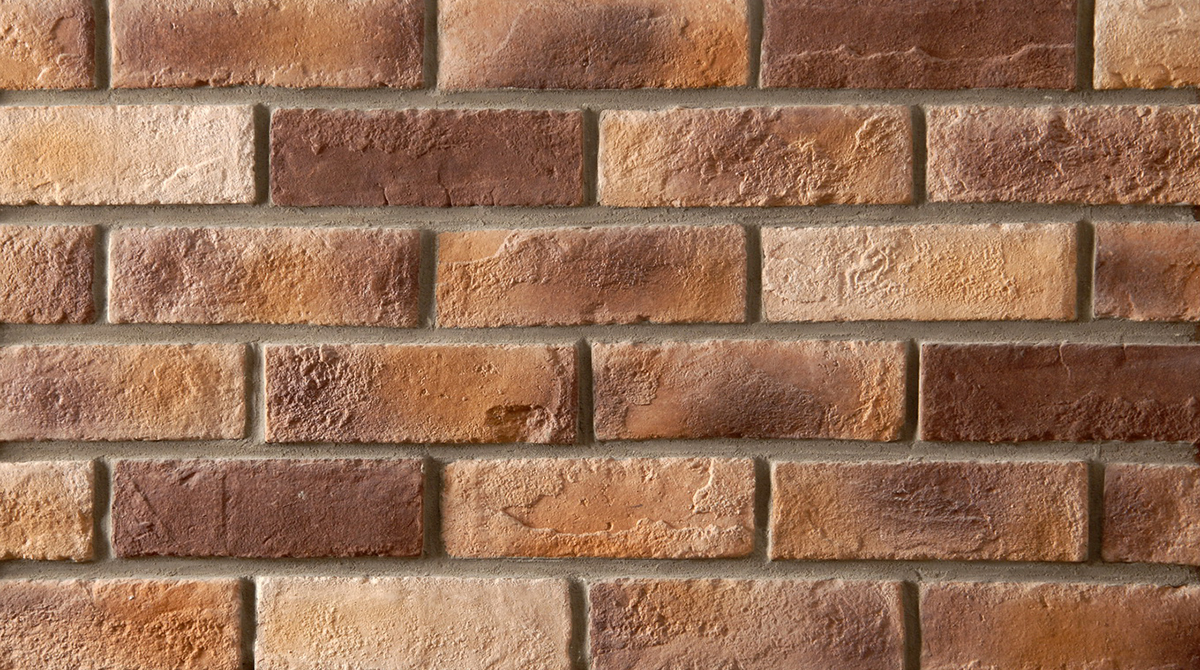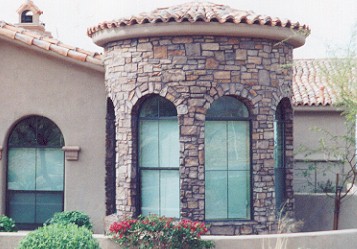Exterior Stone Veneer Maintenance and Cleaning
Few materials in nature are harder than stone, and man has been using it as a building material for thousands of years. Modern homes are often covered in a thin layer of stone, called a veneer. Both stone and culture stone veneers are essentially maintenance-free, which is one reason that home owners choose them as part of their exterior finish. You should inspect your veneer periodically and follow several steps to keep it looking fresh and new.
Inspection
Make a habit of periodically inspecting your stone veneer. Once or twice a year — When inspecting window screens, gutters and other exterior elements — take a few minutes to check the condition of your stone work. Look for signs of damaged stones. They are rugged, but even stone veneers can be damaged through impact, or loosened by vibration. Check the grout between stones, if your veneer is grouted. Look for cracks and loose mortar on the tops of stones for signs of wear.
Repointing
To repoint a veneer, fill a mortar bag with vinyl infused driveway patching mortar. Add grout coloring if needed to match your grout, and fit the bag with a medium tip. Apply a bead of mortar into any crevice or crack that has formed around the stones in your veneer. Then fill cracks in the existing grout between stones as well. Wear a latex glove and smooth the mortar with a damp finger to work it into the cracks and create a smooth, finished surface. Allow the repairs to dry overnight and inspect again, and reapply if drying has opened the gap again.
Cleaning
Most stone veneers are cultured, or concrete stone. This makes them more susceptible to damage from cleaning chemicals than most natural stones. Fill a bucket with warm water and add a little vinegar, or dish soap to create a mild detergent solution. Scrub the stones with a sponge wet with the solution, squeezing it out frequently to keep it clean. Then, rinse the veneer with clear water from your garden hose to ensure no soapy residue remains. You can also use soft bristle brushes, but you should avoid wire brushes. Do not use high pressure sprayers, or acidic cleaning materials intended for actual stone, unless you know that it is actual stone. To save some physical effort, a rotary tool, set on a medium speed, and fitted with a buffing or polishing accessory can be used. Apply soap and water with a sponge, then work the area clean with the tool.
Sealers
You can apply sealers, provided you use breathable sealers, such as those made for stained concrete. The veneer is porous and needs to be able to maintain equilibrium to the outside humidity by swelling and shrinking slightly as it becomes more or less humid. Brush your sealer on with a paint brush in two coats, allowing the first to dry according to the label instructions before applying the second. Do not apply more sealer, unless indicated by the manufacturer. Too much sealer can inhibit the veneer’s ability to breathe.




